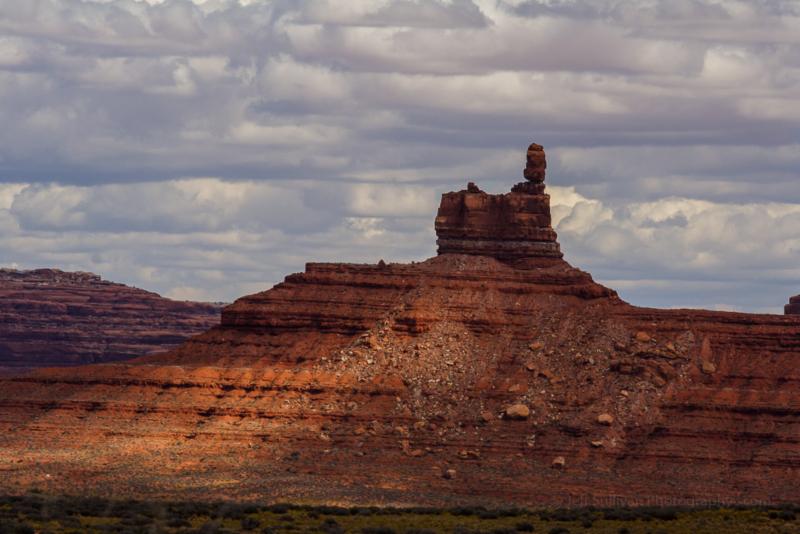Ruffed Grouse Test Positive for West Nile Virus
By Paul A. Smith/Journal Sentinel
Photo by Susan Drury/flickr
As a rule, ruffed grouse hunters don't expect a bird in the bag every time out.
The supremely wild birds typically fly well ahead of hunters. And once airborne, the feathered rockets are extremely challenging to hit. Successful grouse hunts are often measured by flushes heard, not birds killed.
Such metrics may need to be further modified if a disease scare proves to be true.
West Nile Virus had been confirmed in ruffed grouse, officials in Michigan announced Monday, the first such findings in that state.
Five birds collected from August through October, including two found dead and three shot by hunters, were determined to be WNV-positive in testing at the Michigan Department of Natural Resource's Wildlife Disease Laboratory in Lansing.
|
Mountains Targeted for Drilling, Residents Wary
By Benjamin Spillman/Gazette Journal
Photo by mlhradio/flickr
Eriksen, who has a botany degree, relishes the range as an alpine oasis where she can find plants such as the meadow rue, a flowering plant that can't survive in the desert that surrounds the Rubies.
"It is kind of a delicate little thing you find in the shade," she said.
Lately, though, Eriksen fears the fragile beauty of the range is under attack by a proposal to issue leases for oil and gas drilling.
"To see oil rigs and such in the Rubies, that would crush me," said Eriksen, of Elko. "It is my sanctuary."
|
|

Swift Reaction to Monuments Decision
By Bob Marshall/Field & Stream
Photo by Jeffery Sullivan/flickr
President Trump signed a pair of proclamations to remove protection from about 2 million acres of public hunting and fishing lands in Utah-setting off dark warnings from sportsmen's conservation groups about the ultimate impacts of that action.
Trump slashed the size of the Bears Ears National Monument from 1.35 million acres to 228,784 acres and the Grand Staircase-Escalante monument from 1.9 million acres to about 1 million acres in three separate units.
"Some people think that the natural resources of Utah should be controlled by a small handful of very distant bureaucrats located in Washington," the president said. "And guess what? They're wrong.
"Together," he continued, "we will usher in a bright new future of wonder and wealth."
The president is factually wrong on some of those claims. These monuments, like many others, prohibit only certain types of future development. Companies currently operating mines or wells can continue their work. And both monuments have been
seeds for the exploding outdoor recreational industries
, including hunting, fishing, hiking, camping, and water sports.
|

Sea-Level Rise May Threaten U.S. Landmarks
By Charles Q. Choi/The Washington Post
Photo by David Pirrman/flickr
Sea-level rise this century may threaten Jamestown in Virginia, the first permanent English settlement in the Americas; the Kennedy Space Center in Florida, which launches all of NASA's human spaceflight missions; and the Cape Hatteras Lighthouse in North Carolina, the tallest brick lighthouse in the United States, a new study finds.
These iconic locales are some of the more than 13,000 archaeological and historical sites on the Atlantic and Gulf coasts that
rising sea levels
will endanger this century, researchers in the new study said.
Global warming may lead sea levels to rise by about 3.3 feet in the next century and by 16.4 feet or more in the centuries afterward, according to research from the Intergovernmental Panel on Climate Change and others. These rising sea levels could have severe effects, as more than 40 percent of all people worldwide live within 60 miles of the coast, many in low-lying areas, according to reports from the United Nations and others.
|
Swallow Research May Help Human Health
By Karen Herzon/Journal Sentinel
Photo by Ferd Brundick/flickr
What turns on a tree swallow may someday help people fight off diseases.
The better looking a male tree swallow is, the more effective his immune genes are, and the more likely his offspring will be equipped to resist parasites and disease-causing pathogens, researchers have discovered.
Female tree swallows apparently know this instinctively when they select a mate. So, how does this help people?
"We're not that far away from basic animal research to things important to humans," said Peter Dunn, a University of Wisconsin-Milwaukee distinguished professor of biological sciences who has been studying the small, acrobatic songbirds for more than 20 years with his wife and fellow biologist Linda Whittingham.
|
|
|
|
|
|